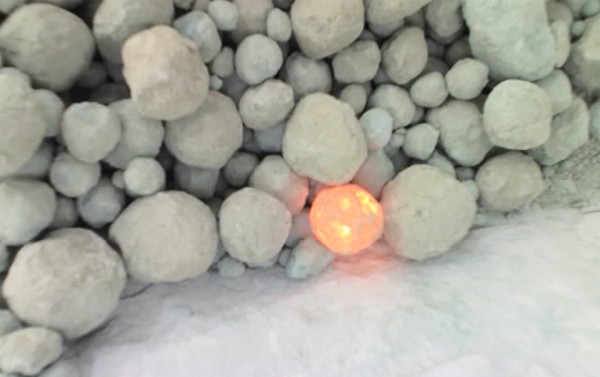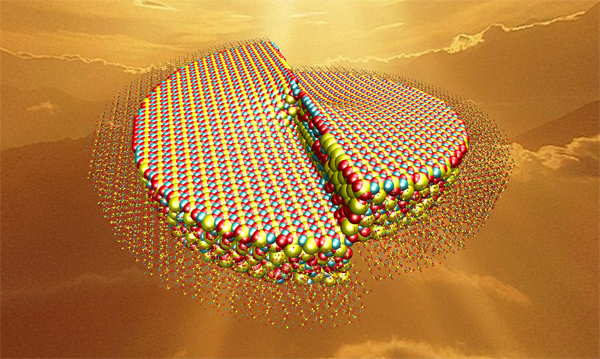
[Image above] Clinker is at its most brittle and most reactive when it’s at its hottest, says a Rice University study. The work could be key in reducing the energy used during the manufacture of concrete. Credit: Wikimedia Commons
Practice makes perfect—save for a few of life’s little anomalies.
Among them, the practice of making cement.
Though concrete has been used for centuries in many of the world’s oldest and most famous structures, the process of manufacturing construction’s go-to material is far from perfect.
Concrete is not cement, rather, a final product of sand and rock aggregate bound together with cement. To make cement, manufacturers heat crushed raw materials, which react to form marble-size clinker, a calcium silicate composition. Ground clinker, when combined with water and small additions of gypsum and limestone, becomes cement.
This process isn’t without its environmental impacts; turning clinker to cement to concrete accounts for roughly 5% of earth’s CO2 emissions.
Efforts to curb concrete’s carbon footprint are helping (see here, here, and here), but an improved process that increases cement manufacturing’s efficiency while reducing spent energy could be key in reducing emissions even further, say Rice University researchers.
The work, led by ACerS member and assistant professor Rouzbeh Shahsavari and former graduate student Lu Chen, began with examining clinker as it cooled post-kiln.
By looking at the crystal and atomic structures during the five phases of cooling, they were able to hone in on the stresses and defects that make some clinker more brittle than others, and thus, easier to grind. One of these “unavoidable” defects—a screw dislocation—is present in clinker both pre- and post-grinding, and has a direct impact on how well the ground powders will react with water.

This cutaway illustration by graduate research assistant Navid Sakhavand shows screw dislocation, a defect present even after the clinker is ground. Credit: Shahsavari Group; Rice University
The researchers found that the hottest clinkers were both the most brittle and most reactive.
“Defects form naturally, and you cannot do anything about them,” says Shahsavari in a Rice news release. “But the more brittle the clinkers are, the better they are for grinding. We found that the initial phase out of the kiln is the most brittle and that defects carry through to the powder. These are places where water molecules want to react.”
According to the release, Shahsavari and team believe their analysis could help manufacturers “consolidate processes and cut grinding energy,” which would mitigate the estimated 10-12% of grinding energy that’s absorbed in cement making as well as the accompanying 50 kg of CO2 sent into the atmosphere.
Their paper, published in Applied Materials and Interfaces, is “Screw Dislocations in Complex, Low Symmetry Oxides: Core Structures, Energetics and Impact on Crystal Growth,” (DOI: 10.1021/am5091808).
Click here to read about another recent study by Shahsavari that shows, at the nanoscale, what happens when “structurally complex” materials like concrete rub together.
